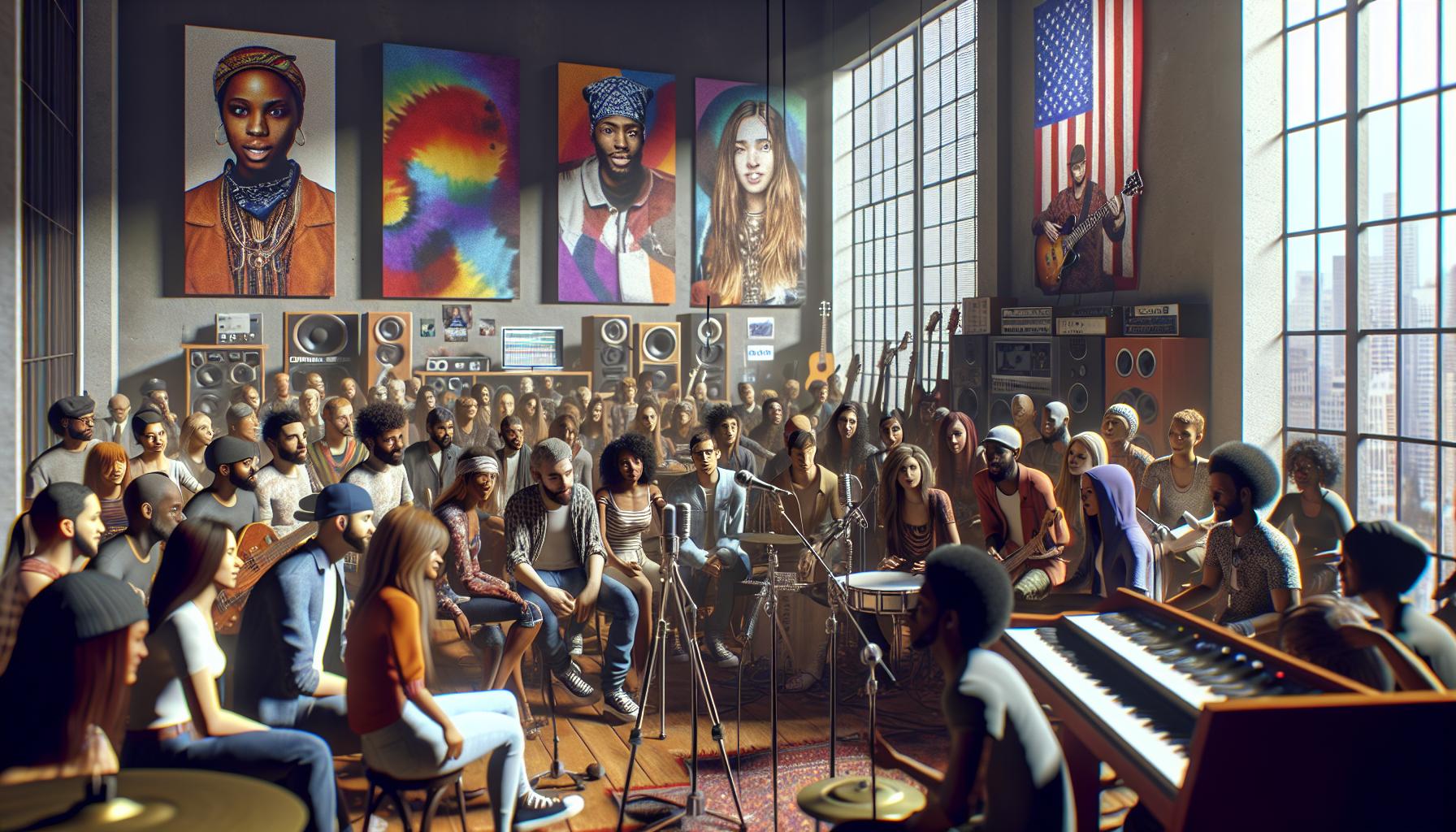YouTube Music has transformed the way people discover and enjoy music, offering an expansive library that caters to every taste. Launched in 2015 as a dedicated platform, it quickly became a go-to destination for music lovers seeking both popular hits and hidden gems. With its seamless integration of user-generated content and official releases, YouTube Music has redefined the music streaming experience.
As it evolved, YouTube Music embraced features like personalized playlists, music videos, and exclusive artist content, setting it apart from other streaming services. This article delves into the rich history of YouTube Music, exploring its journey from a simple music-sharing site to a leading platform in the digital music revolution. Discover how it shaped the music industry and continues to influence the way artists connect with their audiences.
Key Takeaways
- Launch and Evolution: YouTube Music was officially launched in May 2018, evolving from the user-driven content of early days on YouTube to become a dedicated platform for music discovery and enjoyment.
- Integration of Services: The introduction of YouTube Red in 2015 paved the way for YouTube Music, combining ad-free streaming with exclusive content and personalized recommendations, enhancing user experience.
- Impact on Music Distribution: YouTube Music has revolutionized how music is distributed, allowing independent artists to upload directly and gain visibility, thus reshaping the music industry’s landscape.
- Empowerment of Artists: The platform provides musicians direct access to audiences, fostering community engagement through personalized content and data analytics to refine marketing strategies.
- Challenges Faced: YouTube Music confronts challenges related to copyright issues and fierce competition from other streaming services, necessitating continuous innovation to retain and grow its user base.
- Unique Offerings: Unlike its competitors, YouTube Music leverages a vast array of user-generated content and music videos, setting it apart in the crowded digital music space.
Youtube Music History
YouTube Music’s evolution signifies a substantial shift in music consumption and creation since its launch in 2015. The platform has continually adapted to enhance user experiences and artist engagement.
Early Days of YouTube
YouTube launched in 2005 as a general video-sharing platform, allowing users to upload, share, and view videos. Music quickly became a significant focus, with artists and fans uploading performances, music videos, and creative content. By 2006, major record labels recognized YouTube’s potential, leading to partnerships that increased accessibility to official music videos. This collaboration facilitated a transition from traditional media consumption to an online, interactive space for music enthusiasts.
The Rise of User-Generated Content
User-generated content transformed YouTube into a hub for diverse musical expression. Artists without major label backing gained visibility through covers, remixes, and original pieces. This democratization of music allowed for niche genres and underground talents to flourish. Videos that showcased unique interpretations attracted millions of views, proving that community engagement could rival traditional promotional strategies. The combination of user creativity and social connection paved the way for a more personalized music discovery process, enriching the overall user experience on the platform.
Key Milestones in YouTube Music History

YouTube Music’s evolution highlights significant developments that shaped its current status in the music industry. Key milestones include the introduction of YouTube Red and the official launch of YouTube Music.
Introduction of YouTube Red
YouTube Red debuted in 2015, offering ad-free streaming and exclusive content. Subscribers gained access to original series and films, emphasizing the platform’s commitment to original programming. The service integrated seamlessly with YouTube Music, enhancing user experience by providing uninterrupted music streaming and personalized recommendations. This subscription model established the foundation for YouTube Music by prioritizing premium user experiences in video and music consumption.
Launch of YouTube Music
YouTube Music officially launched in May 2018, consolidating YouTube’s music offerings into a dedicated platform. The service featured an extensive library of official tracks, music videos, and user-generated content. Unique algorithms enabled personalized playlists, enhancing music discovery. Integration with Google Assistant facilitated voice search capabilities, providing users a hands-free way to explore their music preferences. The launch marked a significant transition, positioning YouTube Music as a comprehensive solution for music enthusiasts looking to access both mainstream and independent artists.
Impact on the Music Industry

YouTube Music significantly influenced the music industry by reshaping distribution methods and empowering artists. Its reach and accessibility changed how audiences discover and interact with music.
Changes in Music Distribution
YouTube Music revolutionized music distribution through its vast library and widespread accessibility. Independent artists can upload their tracks directly, bypassing traditional gatekeepers. This model allows for increased visibility without relying solely on record labels. The platform’s algorithms recommend music based on user behavior, promoting diverse genres and underrepresented artists. Chart rankings now consider online streams, which shifted the focus toward digital platforms as primary outlets for music consumption.
Influence on Artists and Creators
YouTube Music empowered artists and creators by providing direct access to audiences. Musicians can cultivate fan relationships through personalized content, live streams, and targeted advertising. Exclusive content, like behind-the-scenes footage or collaborations, enriches fan engagement. Additionally, data analytics tools offer artists insights into listener demographics and preferences, enabling tailored marketing strategies. This direct connection fosters a sense of community, allowing emerging artists to gain traction alongside established musicians.
Challenges Faced by YouTube Music

YouTube Music navigates several challenges in the competitive digital music landscape. Key obstacles include copyright issues and intense competition with other streaming services.
Copyright Issues
Copyright issues remain a significant challenge for YouTube Music. Licensing agreements with major record labels and independent artists are critical for legally streaming content. Disputes can arise over the use of copyrighted materials, leading to the removal of songs and videos from the platform. YouTube Music must balance the interests of content owners with user accessibility. Additionally, the platform invests heavily in Content ID technology, which identifies and manages copyrighted content. This system aids in monetizing user-generated content but complicates the sharing of music across the community.
Competition with Other Streaming Services
Competition with other streaming services poses substantial challenges for YouTube Music. Platforms like Spotify, Apple Music, and Amazon Music offer extensive libraries, curated playlists, and exclusive content. These competitors often attract subscribers with unique features, such as personalized experiences and social sharing options. YouTube Music differentiates itself through a vast array of user-generated content and music videos, yet it faces ongoing pressure to enhance its offerings continuously. As market dynamics shift, YouTube Music must innovate to retain users and attract new subscribers, focusing on exclusive content and improved user experiences.
Significant Shift In How Music Is Consumed And Shared
YouTube Music’s journey reflects a significant shift in how music is consumed and shared. Its ability to blend official releases with user-generated content has created a dynamic platform that resonates with diverse audiences. As it continues to evolve and adapt to the challenges of the digital landscape, YouTube Music remains a vital player in shaping the future of music distribution.
The platform’s commitment to empowering artists and fostering community engagement highlights its role in democratizing music. By leveraging innovative features and personalized experiences, YouTube Music not only enhances listener enjoyment but also supports emerging talent in the industry. As it navigates competition and copyright complexities, its influence on the music ecosystem is undeniable and will likely continue to grow.
